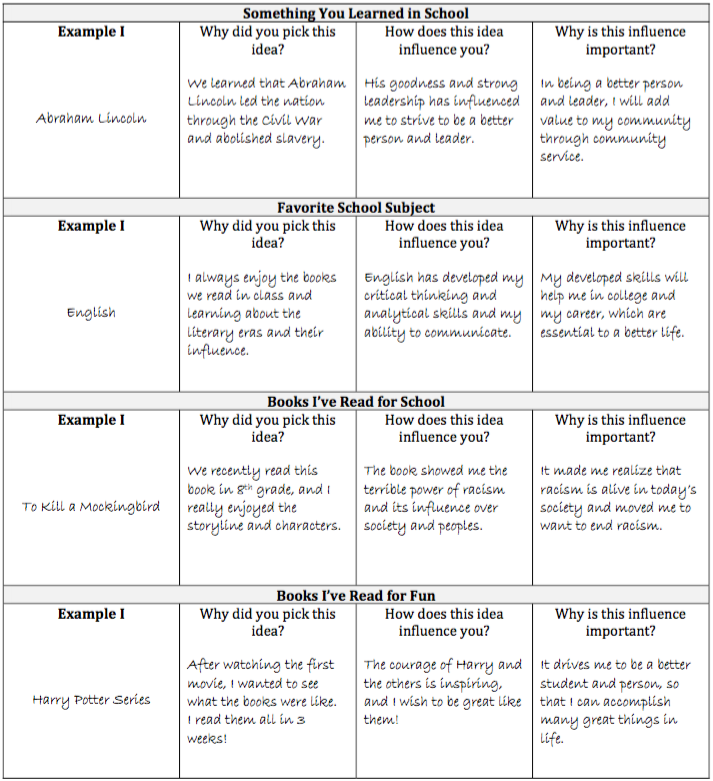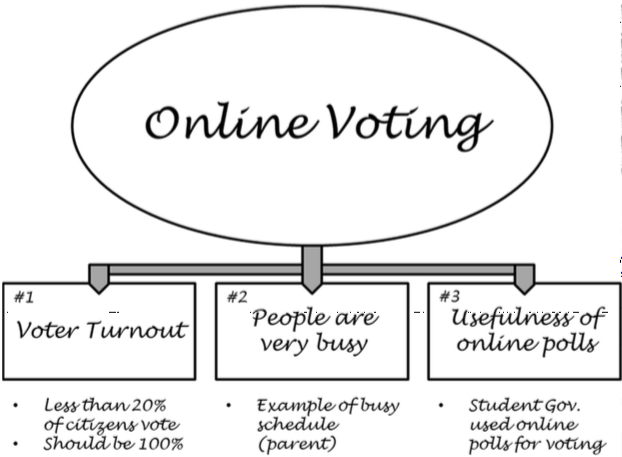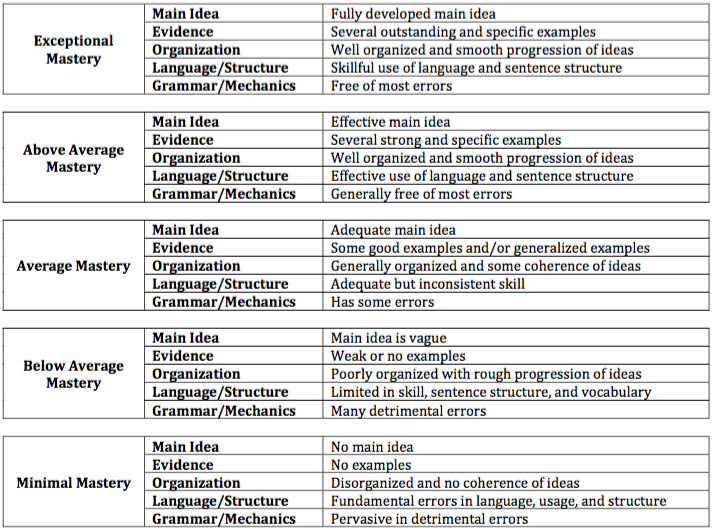The fifth and final section of the ISEE is always the essay, a two-page response to a specific prompt. Your essay is not scored, but a copy of your essay is sent to every school you designate to receive your ISEE results. The schools may then use your essay as a separate weight in determining whether or not to offer you admission to their school.
Schools might compare your ISEE essay to your application responses to evaluate how you write under time constraints versus no time constraints. They may also compare your ISEE essay to your application responses to see if you actually wrote your application responses (or if someone else wrote them!).
You will have 30 minutes to prepare and write your essay in response to a prompt that will be appropriate to your grade level and experiences. So, do not worry that you will not be able to respond to the prompt. Technically, there are no “right” or “wrong” answers, but be sure that you write on the assigned topic. You will not be taken seriously if you write about your favorite singer or TV show when the prompt asks you about a community service project you performed.
Click here for sample essay prompts and responses.
Brainstorming
Though 30 minutes may or may not seem like a good amount of time to write a two page essay, you should use every minute available to create an excellent essay. To save time, you can actually prepare for your essay before you even sit down for the ISEE through brainstorming.
Brainstorming ideas will greatly lessen the time you spend thinking about how you’re going to answer the prompt and what evidence you’ll use to support your thesis, or main idea. Ultimately, these ideas should pull from your experiences, interests, habits, hobbies, and aspirations as a student and as a person:
- Anything that you’ve learned in school (historical figures, social concepts, etc.)
- Favorite school subject (don’t pick lunch or recess)
- Books that you’ve read for school
- Books that you’ve read for fun
- Vacations or trips you’ve taken
- Community service that you’ve performed
- Relationships that you’ve made (family, friends, etc.)
- Interesting people that you’ve met (famous or not)
- Anything from movies, television shows, and the internet that you’ve seen
- Someone to whom you look up (famous or not)
- Hobbies or interests (cars, video games, books, sports, etc.)
- Life aspirations (career, education, family, etc.)
After you’ve brainstormed your ideas, spend some time answering the following questions for each idea:
- Why did you pick this idea?
- How does this idea influence you?
- Why is this influence important?
The answers to these questions will provide supporting evidence to back up whatever claim you make in response to the ISEE prompt.
Brainstorming Example and Practice

Brainstorming Example – “Something You’ve Learned in School”
Choose something you learned from any and all subjects (math, English, history, science, etc.). However, it would be prudent to focus on concepts that can be used to address social issues or concepts that have developed you as a student and/or person. For example, you can choose Abraham Lincoln or George Washington, popular choices for influential historical figures, or the lesson on marine biology that inspired you to focus your education in the sciences.
Brainstorming Example – “Favorite School Subject”
First and foremost, do not pick Lunch or Recess as your favorite school subjects. Remember, these ideas are supposed to help you create an essay that will be read by all the schools you select to receive your ISEE results. You won’t be taken seriously as a candidate for admission, so avoid “subjects” like Lunch, Recess, or possibly even Physical Education. Stick with the tried and true subjects: Math, Science, English, Foreign Language, Social Studies, Fine Arts, etc.
Brainstorming Example – “Books You’ve read for School”
There are students who love to read and those who do not, but don’t worry too much about being the latter. Even if you have hated every book you’ve read for school, you can still have something to say (good or bad) that addresses an ISEE essay prompt about something you’ve read. However, do not fill your essay with negativity. Instead, make the essay a positive, yet critical, explanation of why you disliked portions, if not all, of the book. Whatever you choose, make sure you remember the storyline, the characters, and the general purpose of the book.
Brainstorming Example – “Books You’ve Read for Fun”
While this topic will be easier for those who like to read, those who do not will have read something at some point in their life. You can even use the same books you used for the previous worksheet, but focus more on the parts that you enjoyed. Think about how the book and its characters relate to your life or to real life scenarios. Many books are meant to be social commentaries on today’s world and its events.
Brainstorming Example – “Vacations or Trips That You’ve Taken”
There are some students who have traveled the world and some students who have barely traveled outside of their home city. However, like the book exercises, it doesn’t matter if you’re the former or the latter. Any vacation or trip (think school or church trips) is fair game! You can choose that whirlwind vacation to Europe you took last summer, or you can choose that church mission trip you took to build homes in a nearby town for those in need.
Brainstorming Example – “Community Service”
Official or not, you have probably done something in the past that benefitted the community in some way. You may have volunteered at the local homeless shelter to serve food for the homeless. You may have volunteered at a nursing home to help the residents with their daily activities. You may have helped your neighbors with their lawn or other housework. Anything you have done to help someone else can be considered community service, as long as you were not paid to do it.
Brainstorming Example – “Relationships that You’ve Made”
These are not the “romantic” relationships. These are friendships you have made with various people throughout your life that have made some sort of impact on you. Perhaps someone you met while performing your community service projects or on a vacation you took. These relationships are also those you have made with your family. Perhaps you have a strong bond with your parents, grandparents, siblings, aunts, uncles, or cousins that have matured you in some way.
Brainstorming Example – “Interesting People That You’ve Met”
Famous or not, these are the people that you’ve met throughout your life that have made an impact on you. These people might be the same people you mentioned in the previous worksheet. What makes a person interesting is not necessarily how famous or popular they are. There is a reason they are famous or popular, such as their accomplishments or charity work. Be sure you pick someone about which you’ll have plenty to say.
Brainstorming Example – “Favorite Movie”
While you may not have a specific favorite movie (or three), you probably have some movies that you loved or liked. Focus on movies that show aspects of your personality (action, drama, comedy, etc.). Avoid movies that would be inappropriate to write about, such as comedies with vulgar humor or horror movies with extreme gore.
Brainstorming Example – “Favorite TV Shows”
Like the “Favorite Movies” worksheet, focus on television shows that are appropriate to write about and show aspects of your personality. Avoid reality television shows as they are often perceived as “poor quality” television, which can reflect poorly on your personality and character. You can even choose television shows that have not been on the air for a very long time.
Brainstorming Example – “Hobbies or Interests”
This is probably the most “fun” brainstorming worksheet you’ll complete in these exercises. Your hobbies and interests, no matter how silly they seem, demonstrate who you are as a person and as a student. You might spend some of your weekends playing video games or watching television. You might play sports or participate in clubs/organizations. You might be a walking encyclopedia on cars, trains, planes, animals, sports, games, or random fun facts. Pretty much anything goes!
Brainstorming Example – “Life Aspirations”
Though you may not have figured out where you want to attend college or what career you want to pursue, you have probably done some thinking about what you want out of life. Think about what matters to you, such as building a family, obtaining a lucrative job, or completing a college education. These ambitions will demonstrate to the schools what you plan on using your education to achieve.
Planning Your Essay: An Outline
Before you begin writing your essay, spend between 2 to 3 minutes planning your essay. You may need to spend more time planning, but keep in mind that the more time you spend planning your essay the less time you have to actually write it. Perhaps the best way to plan an essay is by creating an outline. The outline keeps your thoughts organized and directed, as it is easy to fall into generalities that greatly weaken the strength of your essay. You may design your outline however you want, but a visually simple outline works well.
Write your main idea, or thesis, inside of a circle and branch two to three examples off from the circle that support your main idea. You might want to make notes under each supporting idea that detail what you would like to say. However, you do not have to write out complete sentences. Shorthand will make your outline easier to follow. It would also be prudent to number your supporting ideas in the order you want to talk about them.
Example Prompt: If you were given the power to change one thing about the way in which we choose a president of the United States, what would you change and why?
Thought Process: “Last year, my school’s Student Government tried out online voting, since the normal route wasn’t getting many votes. I remember it working really well! I think online voting should be the main way we vote for a president. I think I’ll first use the History lesson I learned on voter turnout for presidential elections. Then I’ll give an example of why voter turnout is low because of people’s busy schedules. Lastly, I’ll discuss what my Student Government did to fix voter turnout for issues involving our student body.”

Structure of the Essay
You’ve determined what you want to write about and you’ve drafted your quick outline. Now, you can spend the remaining 27 or so minutes writing and proofreading your essay. Remember, although the essay is not scored, schools look at your essay to see how effective and creative you are at expressing your ideas. You should vary your sentences in structure and length and include intelligent vocabulary, all of which demonstrates your command and knowledge of English.
The format of the essay is not as important as how effectively you present your ideas. You can choose to write a formal essay with an introduction paragraph, 2‐3 body paragraphs, and a concluding paragraph or you can choose to write a narrative essay, which plays out more like a story of an event you’ve experienced or learned about. Either way, choose the format that is easiest for you to write and that most effectively presents your argument or point.
Example Format of a Formal Essay
- Introduction Paragraph – clearly states which position you are taking regarding the prompt o Intro Sentence – restatement of the prompt in a way that draws the reader in
- Supporting Sentence 1 (SS1) – discusses some aspect of your stance
- Supporting Sentence 2 (SS2) – discusses another aspect of your stance
- Thesis Statement – embodies the entirety of your stance and the essay
Body Paragraph(s) – details each specific example that supports your thesis
- Intro Sentence – describes what the paragraph will discuss (lead‐in to the example) o SS1 – presents the example (event, literature, history, experience, movie, etc.)
- SS2 – further details the example and how it supports the thesis
- SS3 – further details the example and how it supports the thesis
- Concluding Sentence – final statement regarding your thesis vs. the example
Concluding Paragraph – brings your arguments together
- Intro Sentence – restatement of your thesis in a different way
- SS1 – restatement of your first example
- SS2 – restatement of your second example
- SS3 – restatement of your third example
- Concluding Sentence – final statement regarding the entire essay and your thesis
Some Essays Dos and Don’ts

Essay Un-Scoring
Though Section 5’s essay is not scored, copies of your essay will be sent to the schools you designate to receive your ISEE results. The essay is a demonstration of your ability to communicate your ideas intelligently and effectively. Have one or more readers review your essay using the following chart’s guidelines to determine your level of mastery of the English language.

—
This How-To Guide is excerpted from “Upper Level ISEE Prep Guide with 6 Full-Length Practice Tests, 3rd Edition” by Stephen Hayes and the Staff of General Academic. You can buy it on Amazon for about $50.



[…] The Essay on the Upper Level ISEE […]